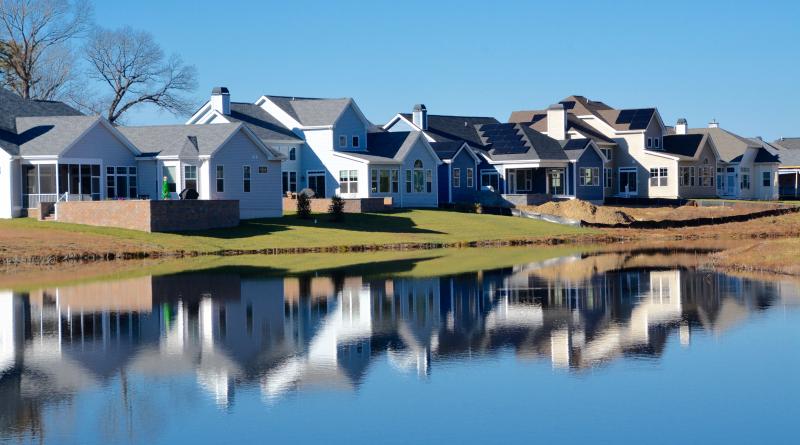Can there be affordable housing in eastern Sussex?
Should market forces or should government step in to dictate creation of affordable housing?
That's the question Sussex County officials are grappling with as they write the county's 2018 comprehensive plan.
Complicating the issue is the high cost of housing in eastern Sussex compared to prices on the western side of the county.
Officials agree that many people who work in the resort area can't afford to buy homes or afford rents near where they work, and their daily commutes contribute to traffic problems. What officials are struggling with is to find a solution.
It was a main topic of conversation during a Dec. 13 county council workshop.
The county has existing programs with incentives for developers to construct moderately priced housing and affordable rentals. Because there has been little to no interest in the programs, the new plan contains improvements to the programs.
“We need to plan for affordable housing and transportation where the jobs are,” said Councilman Rob Arlett, R-Frankford. “It's critical to local families. We have to focus on those who already live here.”
Developer: New incentives needed
Local developer Preston Schell listed obstacles to affordable housing in eastern Sussex County. At the top of the list, he said, is finding suitable locations for affordable rental units.
He asked county officials to guide developers to undeveloped land that would be appropriate for high-density apartments with an affordable component. He said the county could establish areas for workforce housing that would ease the burden on developers in search of high-density zoning required for apartment complexes.
Schell said it's difficult to get rezonings in growth areas. Because most land is zoned AR-1, agricultural-residential, allowing two units per acre, developers are forced to seek zoning changes and conditional-use applications to get higher-density zoning. “Neighbors show up and say how horrible the plan is. They say they support affordable housing, but it's a bad location,” he said.
Schell said county officials should consider having land already zoned HR, high-density residential, allowing up to 12 units per acre.
Secondly, Schell said, current county program incentives are not enough to entice developers.
He suggested county officials consider waiving impact fees, transfer taxes and inspection fees for affordable units in a project. “Current incentives [such as expedited reviews] are not enough,” he said.
Thirdly, he said, the county should adopt changes to its current rental program.
In a rental project – based on average Cape Region monthly rents of $1,100 to $1,200 – affordable units would have rents of about $500 a month based on the county's affordable rental program benchmark of 50 percent of median income. At 80 percent – the county's affordable housing program benchmark – rents would rise to about $800 a month, making projects more enticing for developers.
“Fifty percent of median income kills the ability to do it. Developers can't lose money. You have to make changes and copy the moderately priced housing program. You can make it work with the financial incentives,” he said. “Without changes, it's very unlikely any developer like me is going to participate in the program,” he said.
Councilman George Cole, R-Ocean View, said the only way to make a program work is to make it mandatory. “It's always all about the money,” he said.
Cole said it's not in the county's purview to identify potential areas for affordable housing.
“It sounds good in a book, but in reality the marketplace doesn't go there,” Cole said. “We can't force anything to happen there unless it's mandatory. Government dictating what to do just doesn't happen.”
Density is part of the debate
Consultant John Mullen said it is up to county officials to define affordable housing. “Then you can encourage the type of development you want and adjust the zoning and not make it mandatory,” he said.
As an example, he said, council could consider allowing multifamily housing without a conditional use in every zoning district.
Councilman I.G. Burton, R-Lewes, agreed. “We need to encourage young people to come back and remain here,” he said. “We can't become a retirement community of single-family homes. We have to look at other housing stock to get other people.”
Arlett said the county needs to look beyond single-family detached homes.
Cole fired back saying research shows that 70 percent of people nationwide want single-family homes on average-size lots. “It's never changed,” he said.
Cole said county code already provides several housing options including condos, multifamily, cluster subdivisions and apartments.
Arlett asked the county legal staff whether the county could promote affordable housing projects in areas with public transportation access for local residents and not vacationers.
“It would have to be across the board in other jurisdictions,” answered assistant county attorney Vince Robertson.
Schell said developers can already target the 55-plus demographic. A similar means could be used by county officials to target other demographics, he said.
Schell said county officials could consider an ordinance requiring all developers building in zoning districts that allow above four units per acre to participate in an affordable housing program. “But you need HR zoning for up to 12 units per acre,” he said.
Cole said higher density means more traffic.
“Neighbors would all scream infrastructure,” Cole said. “They would beat us up really bad over traffic. I wouldn't be ready to support this when we have serious transportation issues.”
Schell said transportation issues are exacerbated by not promoting higher density, affordable housing in the resort area. “People have to drive to work across county, so you're pushing them west with more traffic out there,” he said.
Cole said council should consider providing additional low-interest housing loans and support for programs such as the land trust in West Rehoboth or providing more funds to the county's emergency energy fund.
“I don't want to hear more density as a solution, because the county is already bursting,” Cole said.
County council will have a series of comprehensive plan public workshops over the next few months. Go to sussexplan.com for more information.
Sussex affordability gap is wide
The fastest-growing segments of jobs in eastern Sussex County are also among the lowest-paying jobs in the county including healthcare support, retail sales, personal care and service, food preparation and serving, and building and grounds maintenance. Workers in those jobs make annual wages ranging from $23,000 to $27,000, according to U.S. Census data.
State housing officials say a single person would need to make more than $39,000 per year to afford a two-bedroom apartment in the county. The average worker who rents earns $8 an hour, a gap of nearly $23,000 per year, according to the report “Who Can Afford to Live in Delaware.”
Delaware State Housing Authority planner Karen Horton said a low-income family can afford a $110,000 house, which is not even close to the $295,000 median cost of a house in Sussex County, creating a gap of $185,000.
Housing officials say families should spend no more than 30 percent of their income on housing.




















































